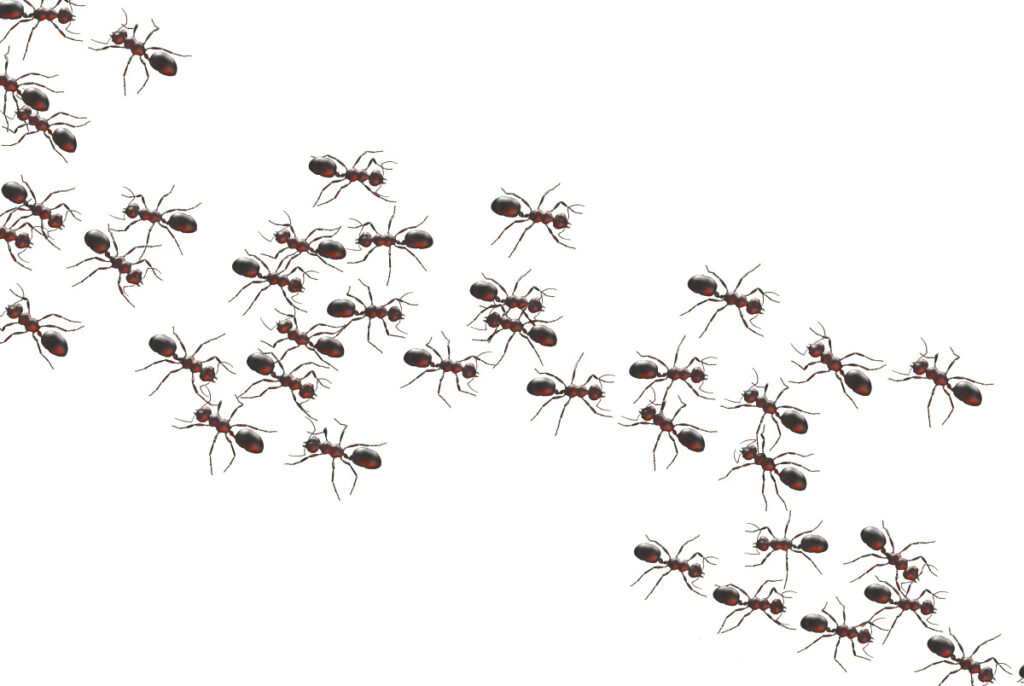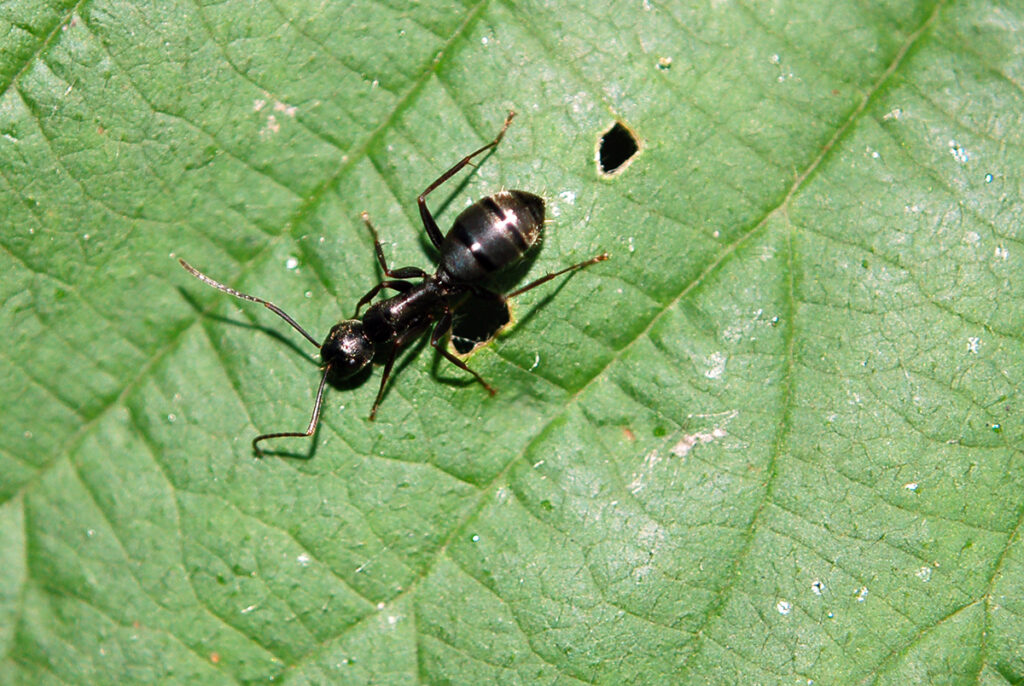Argentine Ants
Have you ever noticed small, relentless ants invading your home, garden, or even your precious succulent collection? Those could very well be Argentine ants, a highly invasive species originating from South America’s Paraná River region.
Argentine ants are small, slender insects typically ranging between 2 to 3 millimeters in length. Their bodies exhibit a uniform coloration ranging from light to dark brown.
They possess segmented antennae with a slight bend or elbow, and their bodies are divided into distinct sections: the head, thorax, and abdomen. Unlike some ant species, Argentine ants lack a stinger and instead have strong jaws used for feeding and grooming.
Despite their tiny size, these ants often travel in dense, orderly trails, making their presence easily noticeable in homes, gardens, and outdoor spaces.

Argentine ants have spread globally, becoming notorious for disrupting ecosystems and inconveniencing humans wherever they establish themselves. But what exactly makes Argentine ants so persistent and difficult to control?
What Makes Argentine Ants Unique?
Argentine ants are fascinating insects, primarily because of their colony structures and social behaviors. Unlike many other ant species, Argentine ants form massive super colonies, each composed of interconnected nests housing multiple queens. Imagine colonies so extensive they span hundreds of miles!
What’s truly astonishing is their ability to recognize and accept each other even when relocated far from their original nest. Transport an Argentine ant from Southern to Northern California, and the local colony would still welcome it. This cooperative behavior stems from their limited genetic diversity outside their native range.

Argentine Ants and Their Impact
Argentine ants have far-reaching impacts, particularly when it comes to ecosystems and agriculture. Unlike their aggressive South American cousins, fire ants, Argentine ants don’t sting. However, they significantly disrupt ecosystems by replacing native ants and other insect species. Have you wondered why your plants seem infested with aphids or mealybugs when Argentine ants appear? These ants actually farm these pests for their sweet honeydew secretions.
In exchange for the honeydew, Argentine ants protect aphids, mealybugs, and scale insects from predators. This symbiotic relationship boosts pest populations, causing significant harm to agriculture, especially to gardens. By shielding pests from natural predators, Argentine ants amplify damage to gardens, greenhouses, and crops.
Why Are Argentine Ants Difficult to Eradicate?
“If Argentine ants are so problematic, why can’t we simply eradicate them?” Unfortunately, their biology and colony structure make this challenging. Unlike many ant species where killing the queen ends the colony, Argentine ant colonies contain many queens. Eliminating just a few queens is not enough. Neighboring queens will replace any losses. Moreover, even if an entire local population is eradicated, countless ants from adjacent colonies are ready to move in.
Their colonies are not bound by traditional nest boundaries; instead, resources like food and information freely flow between nests. The interconnectedness enables Argentine ants to quickly recolonize an area. This makes total eradication virtually impossible. Thus, long-term control strategies, rather than complete eradication, become essential.
Effective Methods for Controlling Argentine Ants
While completely removing Argentine ants might be impractical, several practical and organic methods can reduce their numbers:
- Diatomaceous Earth: This natural powder, derived from sedimentary rock, damages the ants' exoskeletons, deterring them from crossing treated areas. Sprinkle it around plant pots, shelves, and entry points to create effective barriers.
- Boric Acid/Borax: Borax, commonly found in household cleaning products, is lethal to ants but safe for humans in low concentrations. The ants carry the baited borax back to their colonies, eventually reaching the queens and larvae.
- Essential Oils: Argentine ants use pheromones to communicate and navigate. Essential oils like peppermint, cedarwood, and clove disrupt these pheromone trails. This prevents ants from finding food or nesting sites. Mix these oils into soapy water for cleaning shelves and plant pots, masking the trails left by ants.
- Property Maintenance: Argentine ants are drawn to moisture-rich environments provided unintentionally by humans. Reducing water usage in your landscaping—such as switching to xeriscaping—can discourage them. Wrapping sticky barriers around tree trunks or eliminating potential nesting areas like wood piles or debris can limit their nesting and feeding options.
Argentine ants are fascinating insects
Argentine ants have made their presence known globally, impacting ecosystems and human activities . While total eradication might not be achievable, managing their populations is possible. By understanding their behavior, colony structures, and vulnerabilities, homeowners and gardeners can put in place targeted and eco-friendly control methods.







